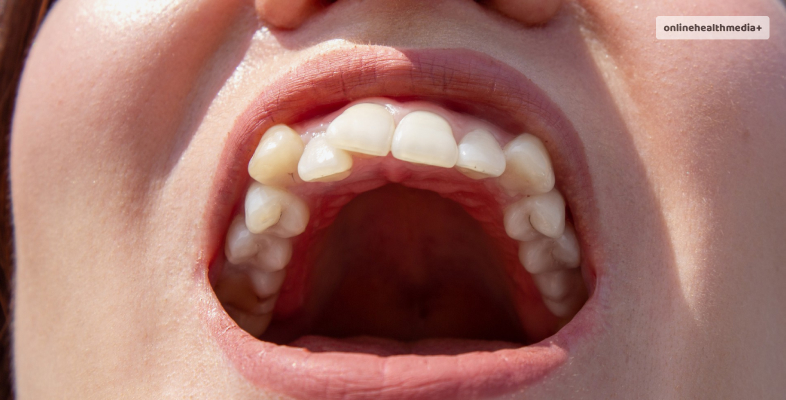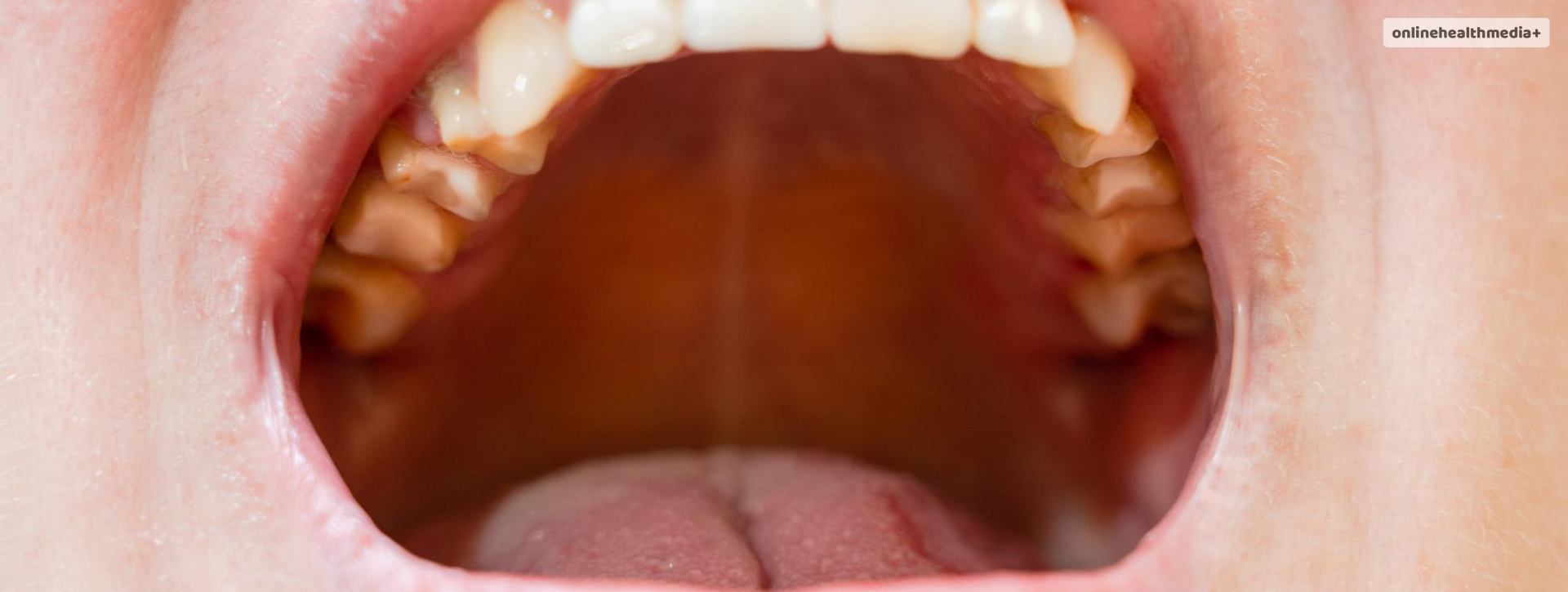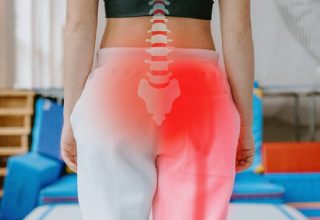Torus Palatinus 101: Harmless Bony Growth That Can Be Fixed.
Torus palatinus is a bony growth found on the roof of your mouth. The growth is usually harmless. This is not similar to cobblestone throat.*
However, torus palatinus can be uncomfortable, making you feel that even eating is inconvenient. The condition is not very prevalent.
However, there have been cases of people developing it later in their lives. Torus palatinus can also be present in a person since birth – this heightens the suspicion around its actual causes.
The following article is an attempt to break down this suspicion (and others) that surround the condition. Read on to learn more about torus palatinus!
Contents
What Is Torus Palatinus?

Torus palatinus, or a bony growth that shows up on your hard palate, can vary in size and number such that you may see more than one of such bony overgrowths on the roof of your mouth.
The condition is not painful and remains to be harmless. At least 20% of the population in the US has this condition. Moreover, the condition is more prevalent in women than men.
A recent study describes it as a “slow growing maxillary exostosis,” which can be found on either side of the median raphe of the palatine bone.
The condition may cause difficulty swallowing, speech, and other common functions. This also depends on the size of the torus palatinus and, sometimes, its number.
When there is only a single overgrowth, doctors refer to it as a torus, and when there are a few of these overgrowths, they are referred to as tori. The overgrowth is usually seen on the roof of the mouth.
However, it may even be visible under the tongue. These overgrowths are thus known as torus mandibularis or mandibular tori. The mandibular jaw is the lower jaw, where the tori forms- under the tongue!
Now that we have seen the two major types of tori that can develop, let’s look at the different aspects of this condition through a study conducted a few years ago.
This study looks at a patient’s case report.
Such studies help doctors know more about a condition and can help people like us become aware. A systemic disorder such as torus palatinus has been seen in a few cases where they were related to an unusual presentation of it.
The case report focuses on a middle-aged female patient presenting an unusual nodular torus palatinus case. The researchers found an insidious progression affecting the patient’s functional activities.
The causes of the condition were found to be similar to those that are common for other cases. These were environmental, epidemiological, and systemic factors. The patient’s genetic profile is one of the most important factors for this condition.
The report also highlights how this condition can be due to disorders in calcium metabolism. This disorder can be related to issues like malocclusion, bruxism, vitamin deficiency, and eating habits.
The diagnosis is occasional, sometimes even recorded for sudden diagnoses in clinics. The reason for this is mainly going to be the lack of reporting by patients. This can be:
- Overlooking the apparent symptoms,
- Not acknowledging any changes that are slowly happening in the mouth and
- Lack of enough information with the patient to recognize these signs.
These three points to be the main reasons why a patient will receive a surprise diagnosis at their regular check-up.
The clinical care of the patients usually becomes filled with complaints such as:
- Complaints of phonetics
- Ulceration in the underlying mucosa
- Need for a prosthesis that requires customization- making it easier for the removal of the lesion.
It is worth noting that the lesions here differ from those that appear in chlamydia in throat.*
The condition – also known as torus palatine – finds its treatment in various options. However, these vary depending on the type of tori.
The case report that the study focuses on
The patient visited the Oral and Maxillofacial Surgery clinic, reporting pain in her hard palate (the roof of the mouth) that occurred while swallowing or eating.
The patient was an individual in her mid-forties and was also experiencing speech difficulties. The patient also reports her family’s medical history, indicating a genetic connection to this condition.
The patient’s grandmother and mother had a similar presentation of the condition, with smaller torus palatinus lesions. The patient, however, had a bigger one than the maternal side of her family.
What was discovered?
The researchers found through the intraoral inspection that an extensive lesion of a solid consistency was present. The overgrowth presented isolations where ulcerations were present. Mucus was covering this extension, which the patient could easily observe.
The extension was quite large, spreading from the hard palate, invading the space of up to 1 cm (about 0.39 in) from the limit of the soft palate. This makes it clear why the patient was having trouble eating and swallowing.
Moreover, upon inspection, the lesion was visibly obstructive, measuring at least 5 cm (about half the length of the long edge of a credit card) in the anteroposterior direction.
And 4 cm (about 1.57 in) and 2.5 cm (about 0.98 in) in the transversal plane. These two measurements are for the posterior and anterior regions of the hard palate, respectively.
Shockingly, the patient was aware of the growth in her mouth – reportedly, the study highlights that the patient first saw the overgrowth when she was five years old.
This shows the slow nature of growth for these types of lesions. Moreover, the patient has seen “insidious” growth of the lesion in the past five years.
It is also noteworthy that the increase in the lesion’s volume and thickness is quite considerable. However, it raises the question of what took the patient so long to seek medical attention.
There can be two speculations for us as readers:
- The patient was ignoring it as something that will go away on its own.
- The patient was not scared about the overgrowth until she started having trouble with speech and performing daily activities.
This highlights the human nature of treating conditions as something that can be ignored until we find it interfering with our daily lives. This is something that can only be evaded through increasing awareness.
There were other characteristics of this lesion that were unearthed in this case report, such as:
- The lesion can change its color as it grows. In this case, the patient’s lesion had an initial whitish appearance with ulceration due to its size.
- The imaging assessment also led to the finding that there was a radiopaque area behind the maxillary central incisor. You can read more about this finding in the study itself, where the researchers have made a clear description.
The process of 3D reconstruction led to the observation that the patient’s hard palate was 70% occupied by the bony protuberance. There was also a slight subdivision present in the anterior region close to the nasopalatine duct.
The signs that helped confirm that the patient had torus palatinus were:
- The presence of compact bone with areas that included osteocytes
- The haversian canal was another area with the presence of compact bone
- Lack of cancellous bone
These three signs were compatible with the condition, which mandated the treatment option to be surgical excision.
The researchers proceeded with the removal of torus palatinus, basing their surgical pre-planning on the 3D scan printing. The picture below shows both observations.
As per the study, the conclusions that could be drawn were:
- New auxiliary techniques, such as 3D scan printing, can help improve surgical planning.
- More studies will help explain the etiological factors that have a role in the disease’s occurrence and progression. This makes it stand at the same point as cancer therapy.
Now, let’s have a look at the common symptoms, causes, and issues that can be observed (similar to those presented by this patient) and the treatment options that can help someone with the condition.
Symptoms of torus palatinus
From the case report, you will be aware of the different symptoms that can indicate this overgrowth in your mouth. These are the signs that the patient should not have overlooked.
The following list is a compilation of the signs that can help you identify when you should seek medical attention for the protuberance, which is most likely not going to go away on its own:
- The presence of one or more bony bumps in the center of your hard palate.
- Difficulty in getting a proper fit with retainers, dentures, mouth guards, or other dental appliances.
- Food that gets stuck around the bony growth
- Difficulty in speech
- Trouble chewing, swallowing, or closing your mouth (this happens in rare cases when the size of the overgrowth blocks the gap that’s present between the jaws.)
- There is also a possibility of your developing mental health condition due to self-stigma or the fear of this condition. However, you must highlight your concerns to the physician for best support.
What causes torus palatinus?
The causes of this condition can vary from being there since birth to environmental factors playing a role in its development.
However, the case report above mentions that this condition can also be systemic, epidemiological, and genetic.
More studies in this area will help give a better answer to the question of the causes of torus palatinus.
Additionally, these risk factors are known to heighten the chance of a person developing this bony overgrowth:
- Bruxism or teeth grinding can increase your risk of developing palatal tori.
- The shape of your jaw, the fit of your teeth, and mouth anatomy are other factors that play a role in its development.
- A family history of this condition also makes it more likely that you will develop torus palatinus.
- High or changing bone density makes you prone to developing this torus.
- Age is also an interesting, albeit less important, factor for developing the condition.
There can be several issues that can arise in relation to torus palatinus. These may be:
- Poor oral hygiene as you cannot navigate your dental cleaning device around the torus
- Difficulty in eating or chewing as the growth impedes either of the two activities
- You can also have trouble in swallowing (as seen in the case report) as the overgrowth can block the passage, making it difficult to swallow.
- The size and position of the overgrowth can lead to discomfort. The overgrowth, although usually not painful, can, however, make it difficult for you to close your mouth comfortably.
- Speech difficulties are also another impairment that a person with torus palatinus may experience.
How is this diagnosed?
The detection of this condition is usually through self-diagnosis. Unless the growth is quite small, it is unmissable.
During a dental examination, your dentist can easily spot the overgrowth and give you a diagnosis that helps in ruling out other issues.
In addition, they can also go ahead with diagnostic tests, such as conducting a CT scan so that they have a clear picture of the affected area.
Making diagnosis easier.
What are the treatment options?
The treatment option usually includes surgical excision, which helps in torus palatinus treatment. Apart from that, there is not much that can help a patient apart from these options, which depend on the patient’s condition.
Here are the treatment options:
- Pain medication if you are experiencing pain from the tori.
- Surgical procedures, including anesthesia and sedation, can help remove excess bone.
The entire process of surgical removal requires expertise. Thus, only go for this option after a professional consultation.
Conclusion
This was all on the condition of torus palatinus and its causes and symptoms, as well as the treatment procedure that can help.
The article highlights the scientific angle on the condition, discussing a case report of a female individual.
The article also highlights the condition of the patient who was the case report’s subject. There was a history of genetic predisposition.
However, as per the risk factors, it is also possible that a person may develop the condition due to certain lifestyle and other key medical factors.
Do you know of any torus palatinus home remedies that may be effective? Let us know in the comments below!
Also read
- Tips For Buying And Using Diabetes Supplies.
- A Critical Look At The Safety Of Pain Relievers.
- Discovering Top-Notch Dental Care In Elkhart, In: Your Guide To Finding The Best Dentist.



